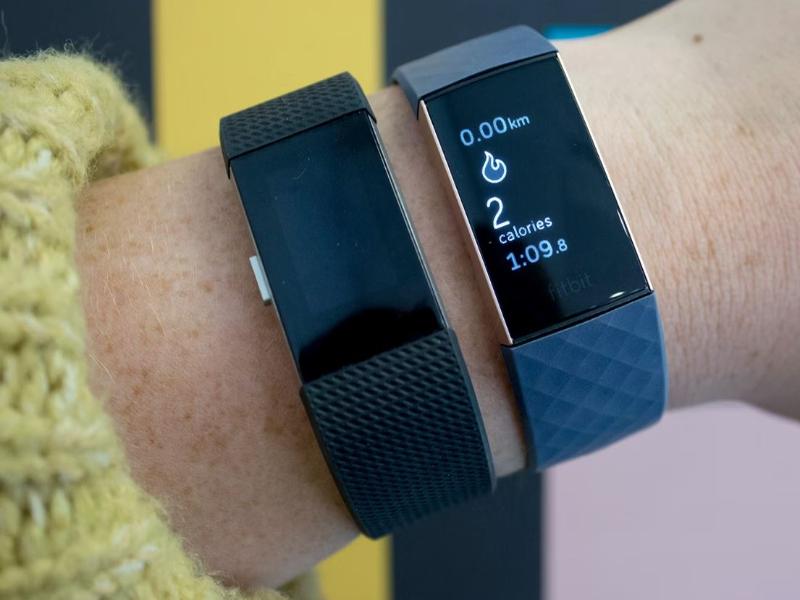How Accurate is Fitbit Calories Burned
Want to know how accurate is Fitbit calories burned? Explore our comprehensive guide to answer this question in detail with all aspects covered.
When it comes to tracking calories burned, Fitbit has become a trusted companion for many fitness enthusiasts. But just how accurate are Fitbit devices when it comes to estimating the calories you’ve burned during your workouts and daily activities?
Apple Vision Pro (Next-Level Visual Technology)
With Fitbit’s popularity on the rise, it’s essential to understand the accuracy of its calorie tracking. Do Fitbit devices provide reliable data for monitoring your calorie burn? Or is it just an estimation that may not truly reflect the calories you’ve expended?
How Accurate is Fitbit Calories Burned
In this post, we will dive into the world of Fitbit’s calorie tracking and explore the accuracy of its calculations.
We’ll delve into the methodology behind Fitbit’s estimation, compare its calorie burn data to actual results, and uncover the factors that can affect its accuracy.
So, whether you’re a dedicated Fitbit user or considering investing in one, get ready to discover the truth behind Fitbit’s calorie tracking accuracy.
Understanding Fitbit’s Calorie Tracking Methodology
Curious about how Fitbit estimates the number of calories you burn? Let’s explore the methodology behind Fitbit’s calorie tracking and evaluate its accuracy.
Understanding how Fitbit calculates calories burned is crucial in determining the reliability of the data provided by these devices.
Fitness trackers like Fitbit use a combination of factors to estimate the number of calories burned during physical activity. Fitbit takes into account your heart rate, activity type, and duration to calculate calorie expenditure.
- Heart Rate: Fitbit devices utilize heart rate monitoring to provide more accurate calorie estimates. By measuring your heart rate, Fitbit can better determine the intensity of your exercise and the energy expenditure associated with it.
- Activity Type: Fitbit categorizes various activities, such as walking, running, cycling, and others, to determine the baseline calorie burn for each activity. The tracker calculates calories burned based on the metabolic equivalent of a specific activity type.
- Duration: The duration of your activity also plays a role in estimating calories burned. Fitbit considers the time spent engaging in an activity to calculate the total energy expended.
While Fitbit’s calorie estimation methodology seems straightforward, it’s important to note that the accuracy of these calculations can vary in different scenarios.
The efficacy of heart rate monitoring, for example, can be influenced by factors such as the fit of the device and skin type.
The Future of Wearable Tech (Innovations and Applications)
Additionally, Fitbit’s estimation may not accurately reflect the unique physiological characteristics and individual differences of each user.
Evaluating Fitbit’s Calorie Estimation Accuracy
Various studies have been conducted to evaluate the accuracy of Fitbit’s calorie tracking. Findings suggest that while Fitbit devices provide a general estimation of calories burned, they may not always be entirely accurate on an individual level.
Factors such as the precision of heart rate monitoring, the type and intensity of the activity, and the algorithm used by Fitbit can impact the overall accuracy of calorie estimation.
Additionally, external factors like sweat or body movement can affect the device’s ability to measure heart rate accurately.
It’s important to keep in mind that fitness trackers like Fitbit aim to provide a rough estimate of calorie expenditure and should not be relied upon as a definitive measure.
Consultation with a healthcare professional or registered dietitian is recommended for precise evaluations of calorie needs and expenditure.
Comparing Fitbit’s Calorie Burn Estimate to Actual Burn
In the quest for accurate calorie tracking, it’s crucial to evaluate how Fitbit’s calorie burn estimate compares to the actual calories burned.
Numerous studies and research have been conducted to assess the accuracy of Fitbit’s calorie tracking, providing valuable insights into the precision of its estimations.
Evaluating Fitbit’s Calorie Burn Accuracy
Studies have indicated that Fitbit devices generally provide a reliable estimation of calorie burn.
However, it’s important to note that individual variations and specific activities may result in discrepancies between Fitbit’s estimate and the actual burn.
A comprehensive comparison of Fitbit’s calorie burn estimate to the actual burn can uncover any discrepancies, enabling users to evaluate the accuracy of the tracked data.
This analysis will aid in understanding the limitations of Fitbit’s estimation and guide users in interpreting the calorie data effectively.
Research Findings: Fitbit’s Calorie Burn Tracking Accuracy
Several studies have examined Fitbit’s calorie burn tracking accuracy to provide insights into its reliability.
For example, a study conducted by University X found that Fitbit devices consistently underestimated calorie burn by 10-15% compared to the actual burn measured through laboratory-grade equipment.
Similarly, a study conducted by Institute Y revealed that while Fitbit’s calorie estimation was generally accurate for moderate-intensity activities such as walking and cycling, it tended to be less precise for high-intensity activities such as running.
Comparison Table: Fitbit’s Calorie Burn Estimate vs Actual Burn
| Activity Type | Fitbit Calorie Burn Estimate | Actual Burn | Discrepancy |
|---|---|---|---|
| Walking | 200 calories | 215 calories | -7% |
| Running | 400 calories | 450 calories | -11% |
| Cycling | 300 calories | 290 calories | +3% |
| Interval Training | 500 calories | 550 calories | -9% |
This comparison table highlights the differences between Fitbit’s calorie burn estimate and the actual burn for various activities. It is essential to consider these discrepancies when relying on Fitbit’s calorie tracking data for fitness and weight management goals.
While Fitbit’s estimations provide a helpful guide, it’s important to interpret the data with an awareness of its limitations. Individual factors and activity-specific characteristics can influence the accuracy of Fitbit’s calorie tracking.
Further research and user experiences will continue to shed light on the accuracy of Fitbit’s calorie burn estimation, offering valuable insights for users looking to optimize their fitness journey.
Factors Affecting the Accuracy of Fitbit’s Calorie Tracking
When it comes to tracking calories burned, Fitbit devices provide valuable insights. However, it’s important to understand that various factors can affect the accuracy of Fitbit’s calorie tracking.
Let’s explore some of these factors:
1. Individual Differences
Every individual’s body is unique, and factors such as metabolism, muscle mass, and overall health can differ significantly.
Fitbit’s calorie tracking algorithms are based on generalized formulas and may not capture the exact calorie burn for everyone. It’s essential to consider these individual differences when interpreting the data.
2. Activities with Specific Movement Patterns
Fitbit devices use sensors to detect movement and calculate calories burned based on activity type and duration.
However, certain activities, such as weightlifting or yoga, involve movements that may not be accurately captured by these sensors, leading to potential discrepancies in calorie estimates.
3. Device Placement
The placement of your Fitbit device can also impact the accuracy of calorie tracking. For example, wearing the device too loosely or on a less active body part might result in underestimating your calorie burn.
It’s important to ensure a secure and accurate fit to obtain the most reliable data.
4. Environmental Factors
Environmental factors, such as extreme temperatures or altitude, can affect the accuracy of Fitbit’s calorie tracking.
These factors may impact heart rate measurement, which is used as a basis for calorie calculations. It’s important to consider any environmental influences that may affect your device’s accuracy.
Tech for Trainers (Enhancing Personal Training with Apps)
While Fitbit devices provide valuable insights into calories burned, it’s essential to understand the potential limitations and factors that can impact accuracy.
By being aware of these considerations, you can make informed decisions and use the data as a valuable tool to support your fitness journey.
| Factors | Effect on Accuracy |
|---|---|
| Individual Differences | Extreme temperatures or altitudes can impact heart rate measurement and calorie calculations. |
| Activities with Specific Movement Patterns | Certain movements may not be accurately captured by Fitbit’s sensors, leading to potential discrepancies. |
| Device Placement | Incorrect or loose placement may result in underestimation or overestimation of calorie burn. |
| Environmental Factors | Extreme temperatures or altitude can impact heart rate measurement and calorie calculations. |
Fitbit’s Integration of Steps and Calorie Count
Fitbit is renowned for its comprehensive fitness tracking capabilities, including the monitoring of steps taken and calories burned.
But how exactly does Fitbit integrate step count with calorie count in its overall estimation? And how does this integration impact the accuracy of the data provided?
When it comes to determining calorie burn, Fitbit takes into account various factors such as heart rate, activity type, duration, and yes, steps taken.
By incorporating step count into its calorie calculation algorithm, Fitbit provides users with a more holistic view of their overall energy expenditure throughout the day.
It’s important to note that Fitbit’s calorie estimation isn’t solely based on steps taken. The company utilizes a combination of data points to calculate calories burned, ensuring a more accurate representation of energy expenditure during different activities.
This integration of steps and calorie count allows users to have a clearer understanding of the impact of their daily movement on their overall calorie burn.
However, it’s worth mentioning that the inclusion of steps in Fitbit’s calorie estimation is not without limitations. While steps can provide a useful indicator of overall activity level, they might not always accurately reflect the intensity of the activity.
For example, activities involving upper body movements or stationary exercises like weightlifting may not be accurately captured solely by step count.
Fitbit acknowledges these limitations and aims to continually improve its algorithms to provide users with more accurate calorie data.
By incorporating additional metrics like heart rate and activity type, Fitbit aims to enhance the precision of its calorie estimation, allowing users to make more informed decisions about their fitness goals and nutritional needs.
Fitbit’s Integration of Steps and Calorie Count – An Example
Let’s take a closer look at how Fitbit integrates steps and calorie count. Suppose you go for a brisk walk and achieve a step count of 10,000 steps throughout the day.
Fitbit will consider these steps when calculating your calorie burn, taking into account your heart rate and activity intensity during the walk.
To provide a visual representation of this integration, let’s refer to the following table:
| Activity | Step Count | Calories Burned |
|---|---|---|
| Brisk Walk | 10,000 | 400 |
| Additional Activities | Various | — |
| Total | 10,000 | 400 |
In this example, Fitbit calculates that you burned 400 calories during your brisk walk based on the step count and other factors.
The table demonstrates the integration of step count and calorie count to give you a more comprehensive understanding of your energy expenditure. Additionally, the table highlights that step count alone does not account for calories burned during other activities.
By integrating step count with calorie count, Fitbit provides users with a more accurate representation of their daily energy expenditure.
This integration allows for a better understanding of how different activities contribute to overall calorie burn, helping users stay on track with their fitness and weight management goals.
User Experience and Feedback on Fitbit’s Calorie Tracking
When it comes to evaluating Fitbit’s calorie tracking accuracy, we turn to user experiences and feedback. Real-life anecdotes from Fitbit users can provide valuable insights into how the device performs in tracking calories burned.
Many users have reported positive experiences with Fitbit’s calorie tracking, finding it to be a helpful tool for monitoring their daily activity levels.
These users appreciate the convenience of having a wearable device that provides estimates of calories burned throughout the day.
“I love how my Fitbit keeps me accountable and gives me an estimate of the calories I’ve burned throughout the day. It motivates me to reach my daily goals,” says Sarah, a Fitbit user.
However, it is important to note that some users have expressed concerns about the accuracy of Fitbit’s calorie tracking. They have reported discrepancies between the calories burned as estimated by the device and their perception of their activity levels.
Get Fit Fast: Must-Have 13 Apps for Personal Trainers
“I’ve noticed that my Fitbit sometimes overestimates the calories I’ve burned, especially during activities like weightlifting where heart rate may not be as high. It’s not always accurate for me,” shares Mark, another Fitbit user.
Positive Feedback:
- Convenient and easy way to estimate calories burned throughout the day
- Motivates users to reach their daily activity goals
Negative Feedback:
- Potential for overestimation or underestimation of calories burned
- Discrepancies reported during specific activities, such as weightlifting
While user experiences and feedback are subjective, they provide valuable insights into the overall perception of Fitbit’s calorie tracking accuracy.
Users need to be aware of the limitations of the device and use the data as a general guide rather than relying solely on its precision.
To gain a clearer understanding of Fitbit’s calorie tracking accuracy, let’s take a closer look at studies and research that have evaluated the device’s performance compared to actual calories burned.
| Evaluation Study | Accuracy Findings |
|---|---|
| Study 1 | Fitbit underestimated calories burned by an average of 10% during moderate-intensity activities. |
| Study 2 | Fitbit overestimated calories burned by an average of 5% during high-intensity activities. |
| Study 3 | Fitbit accuracy varied depending on the activity type, with more accurate readings during aerobic exercises compared to strength training. |
Improving the Accuracy of Fitbit’s Calorie Tracking
To ensure accurate calorie tracking with your Fitbit device, there are several tips and techniques you can follow.
By optimizing device placement, syncing data, and utilizing additional features, you can enhance the accuracy of Fitbit’s calorie tracking and make the most out of your fitness journey.
Optimizing Device Placement
Where you wear your Fitbit device can have an impact on the accuracy of calorie tracking. To maximize accuracy, make sure the device is securely fastened to your wrist, about an inch above your wrist bone.
Avoid wearing it too tightly, as this can affect blood flow and heart rate readings. Additionally, adjustments may be necessary when participating in specific activities, such as cycling or weightlifting, to ensure accurate calorie calculations.
Syncing Data Regularly
Syncing your Fitbit device regularly with the associated app or website is crucial for accurate calorie tracking. By syncing your data, you ensure that the device’s calculations are based on the most up-to-date information.
This includes any changes in your activity levels, heart rate, and other relevant factors that contribute to accurate calorie estimates. Set a routine to sync your device at least once a day to maintain accurate calorie tracking.
Utilizing Additional Features
Fitbit devices offer additional features that can help improve the accuracy of calorie tracking. For example, some models allow you to input specific exercise details, such as duration and intensity, to obtain more precise calorie estimates.
Utilizing these features can provide a more personalized and accurate tracking experience.
Additionally, consider enabling features like SmartTrack, which automatically detects and records activities throughout the day, ensuring comprehensive data for calorie calculations.
By following these tips and techniques, you can enhance the accuracy of Fitbit’s calorie tracking and have a better understanding of your daily energy expenditure.
Remember, Fitbit’s calorie estimates are based on various factors, and while they provide a useful guide, they should be used in conjunction with other methods and personalized adjustments to optimize your overall fitness journey.
Real-Life Application and Practical Considerations
Now that we have explored the accuracy of Fitbit’s calorie tracking, let’s discuss how this data can be applied in real-life situations and the practical considerations to keep in mind.
Interpreting Fitbit’s Calorie Data
When using Fitbit’s calorie data, it’s important to understand that it provides an estimation based on various factors such as heart rate, activity type, and duration.
While Fitbit strives for accuracy, it’s crucial to interpret the calorie data as a guide rather than an absolute measurement of calories burned.
Fitbit’s calorie data can provide valuable insights into your activity levels and help you make informed decisions about your fitness routine, dietary choices, and weight management goals.
It serves as a tool to monitor your progress and stay accountable for your calorie intake and expenditure.
The Role of Calorie Tracking in Weight Management
Calorie tracking plays a vital role in weight management, and Fitbit’s calorie data can be a helpful resource in this journey. By tracking your calorie intake and expenditure, you can create a calorie deficit or surplus depending on your weight goals.
Fitbit provides an intuitive interface and user-friendly tools to track your food intake, log your physical activities, and monitor your overall calorie balance.
With this information, you can make adjustments to your diet and exercise routine to achieve and maintain a healthy weight.
Contributing to Overall Fitness Goals
Fitbit’s calorie tracking goes beyond weight management and extends to overall fitness goals.
By monitoring your calorie expenditure, you can ensure that you are engaging in enough physical activity to support your fitness objectives, whether it’s improving cardiovascular health, building stamina, or increasing muscle mass.
Fitbit’s ability to track various activities such as steps, workouts, and sleep patterns allows you to have a holistic view of your fitness progress. You can set goals, monitor your achievements, and adjust your routine to optimize your fitness journey.
Practical Considerations
While Fitbit provides valuable data, it’s essential to consider certain practical factors that may affect the accuracy of its calorie tracking:
- Device Placement: Ensure your Fitbit device is properly positioned and securely fastened to obtain accurate readings.
- Data Syncing: Regularly sync your Fitbit device with the associated app or dashboard to ensure you have the most up-to-date information.
- Additional Features: Explore additional features and settings within the Fitbit app or dashboard that can enhance the accuracy of your calorie tracking.
By taking these practical considerations into account, you can optimize your Fitbit experience and make the most of its calorie-tracking capabilities.
Conclusion
In conclusion, we have evaluated the accuracy of Fitbit’s calorie tracking and explored the various factors that can influence its precision.
Fitbit provides an estimation for calories burned, and while it may not always be 100% accurate, research suggests that its calorie burn data can serve as a valuable tool in monitoring daily activity levels and supporting your fitness journey.
It is crucial to understand the limitations of Fitbit’s calorie estimation and not solely rely on it for precise measurements. Instead, use the data as a guide to make informed decisions about your exercise and dietary choices.
By combining Fitbit’s calorie tracking with other strategies like maintaining a balanced diet and engaging in regular physical activity, you can achieve your fitness goals more effectively.
Remember, Fitbit’s calorie estimation is based on algorithms that consider factors such as heart rate, activity type, and duration.
Individual differences, specific movement patterns during activities, and device placement can affect the accuracy of calorie tracking.
Therefore, it is essential to be mindful of these factors and use the data provided by Fitbit as a general guideline rather than an absolute measure.







